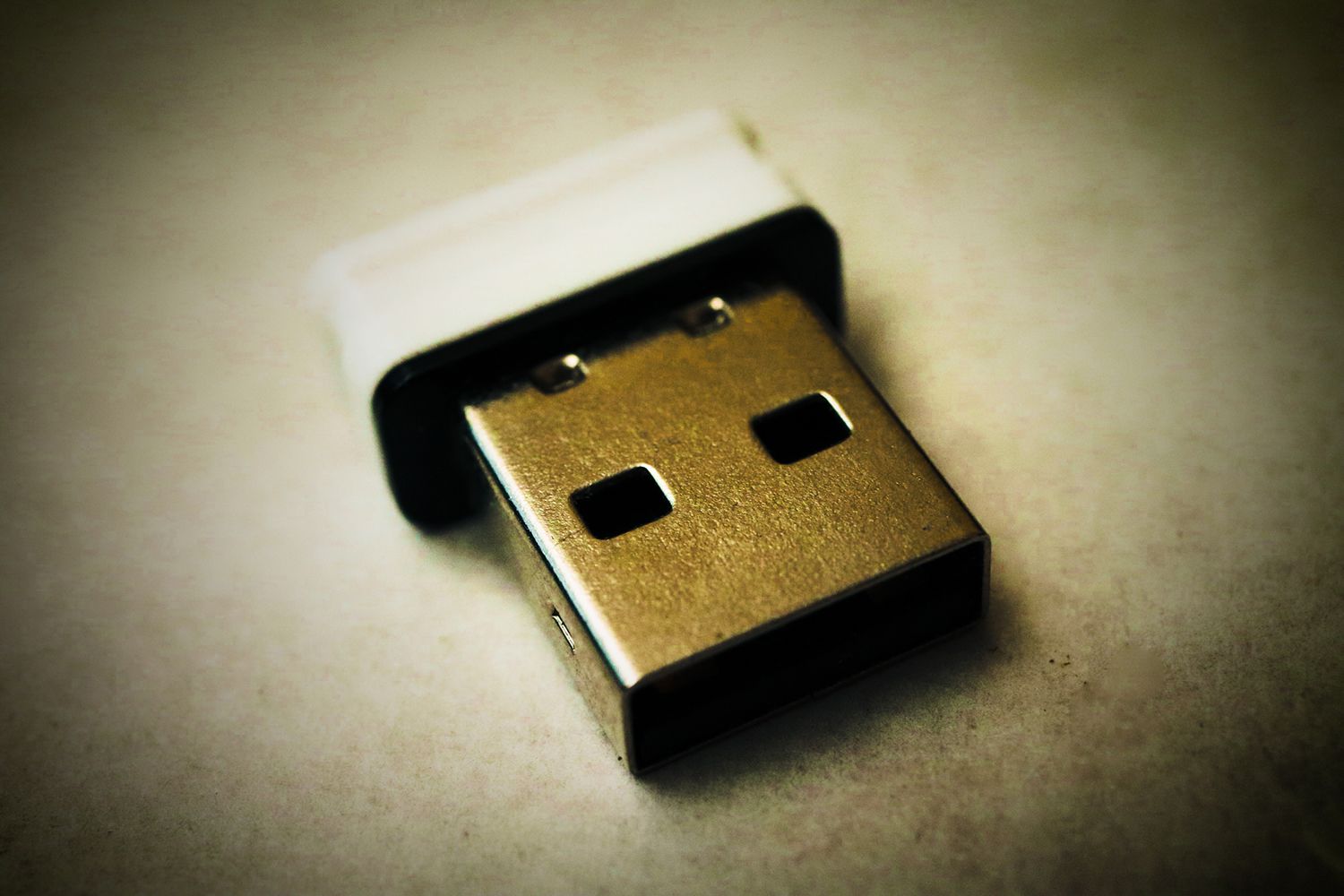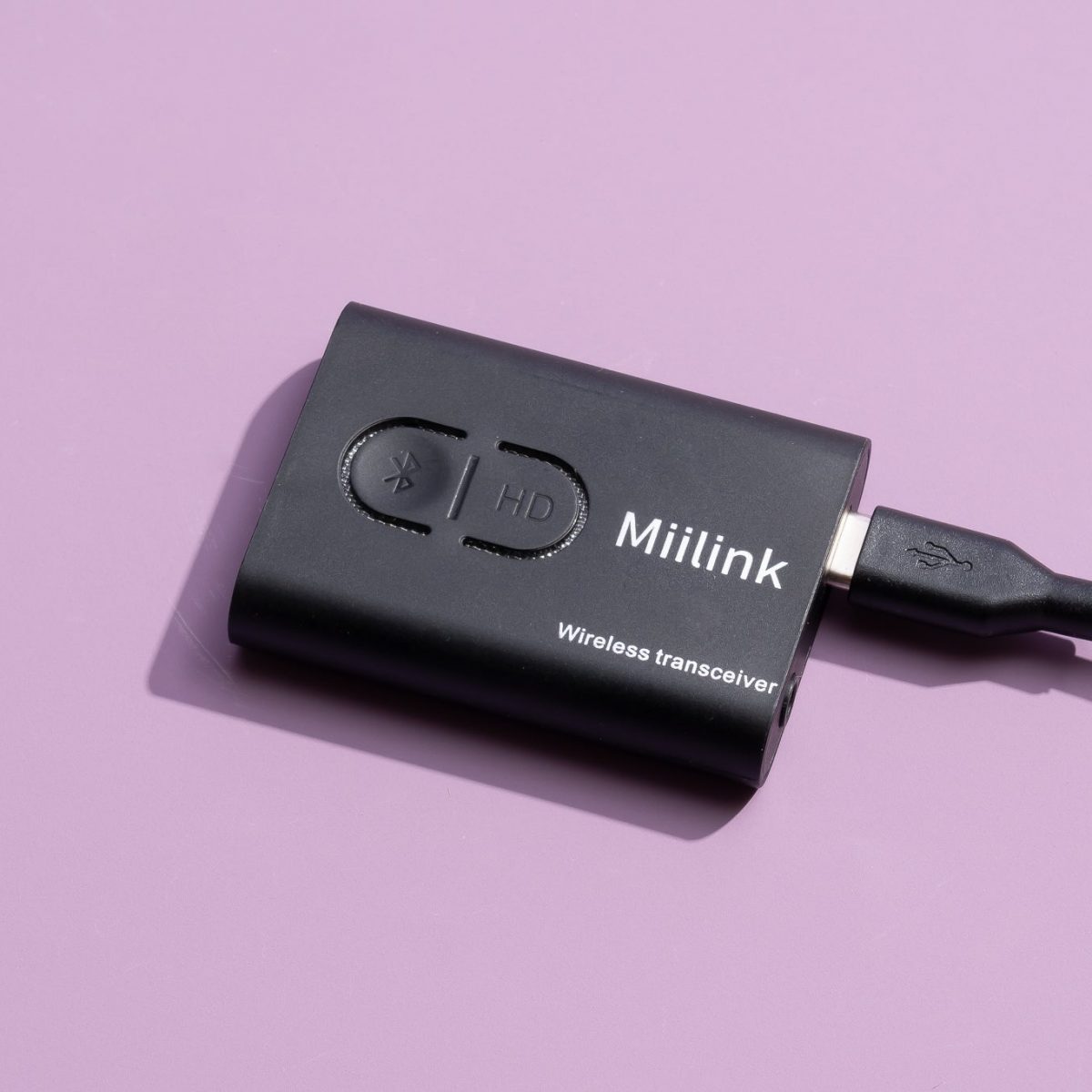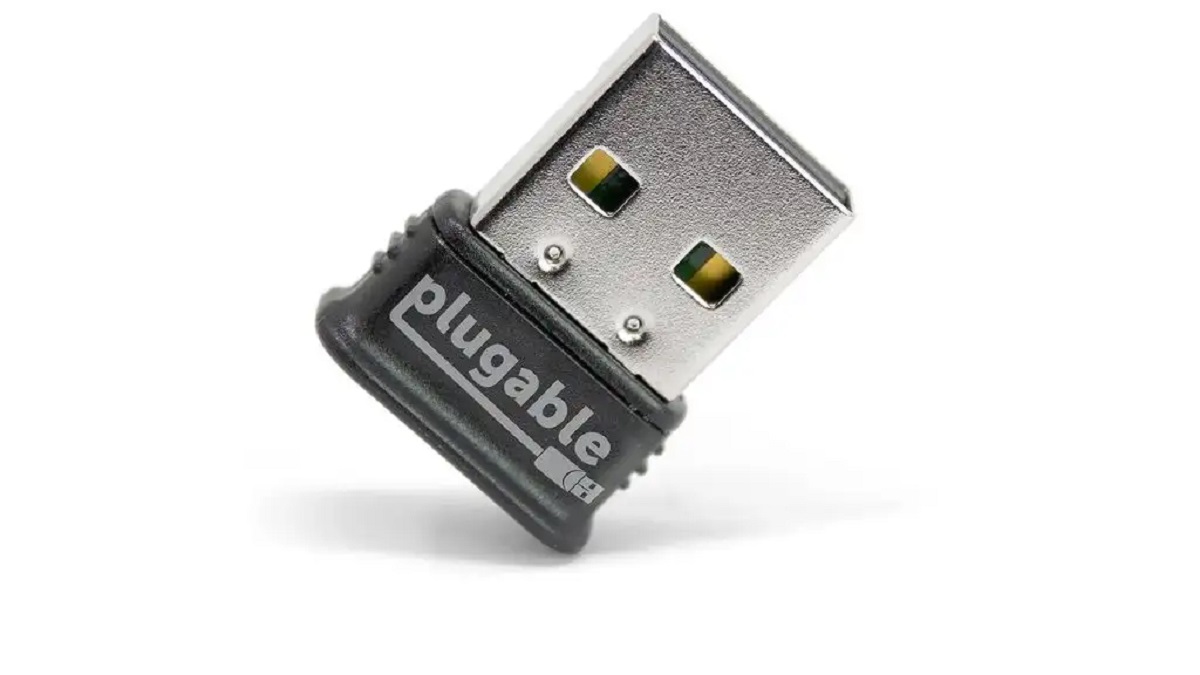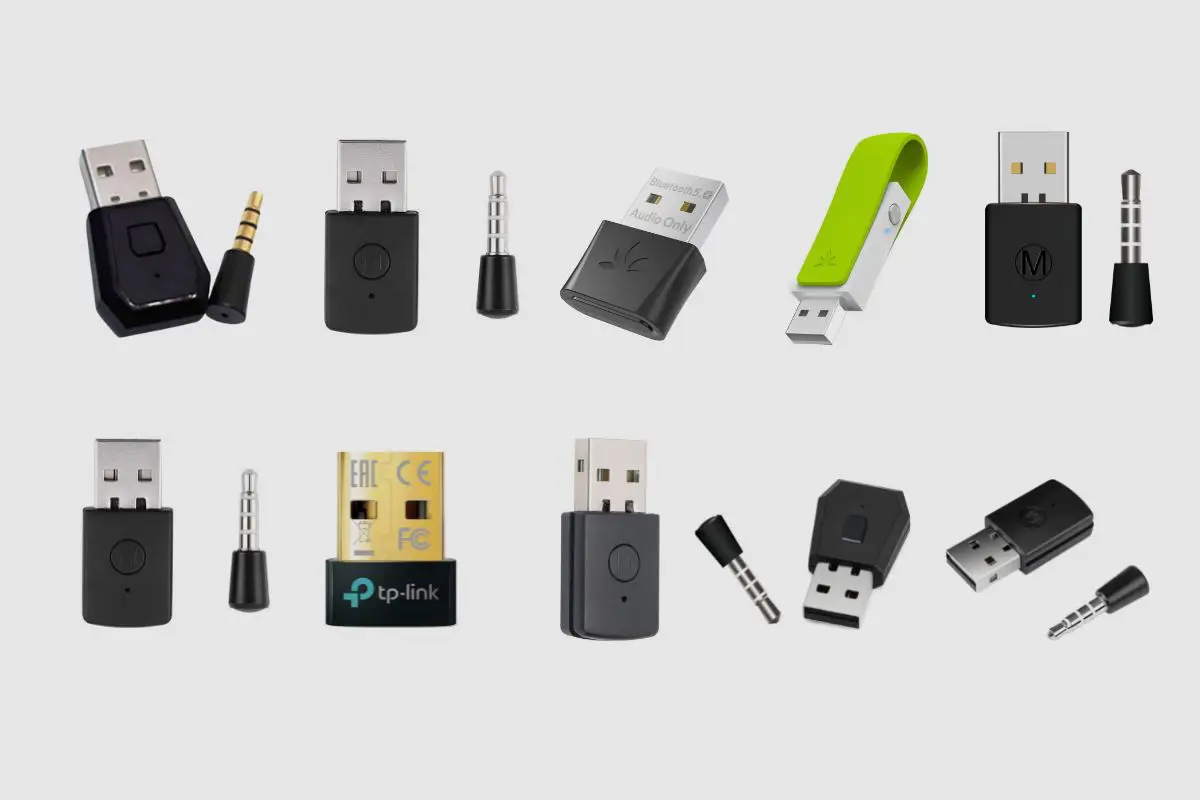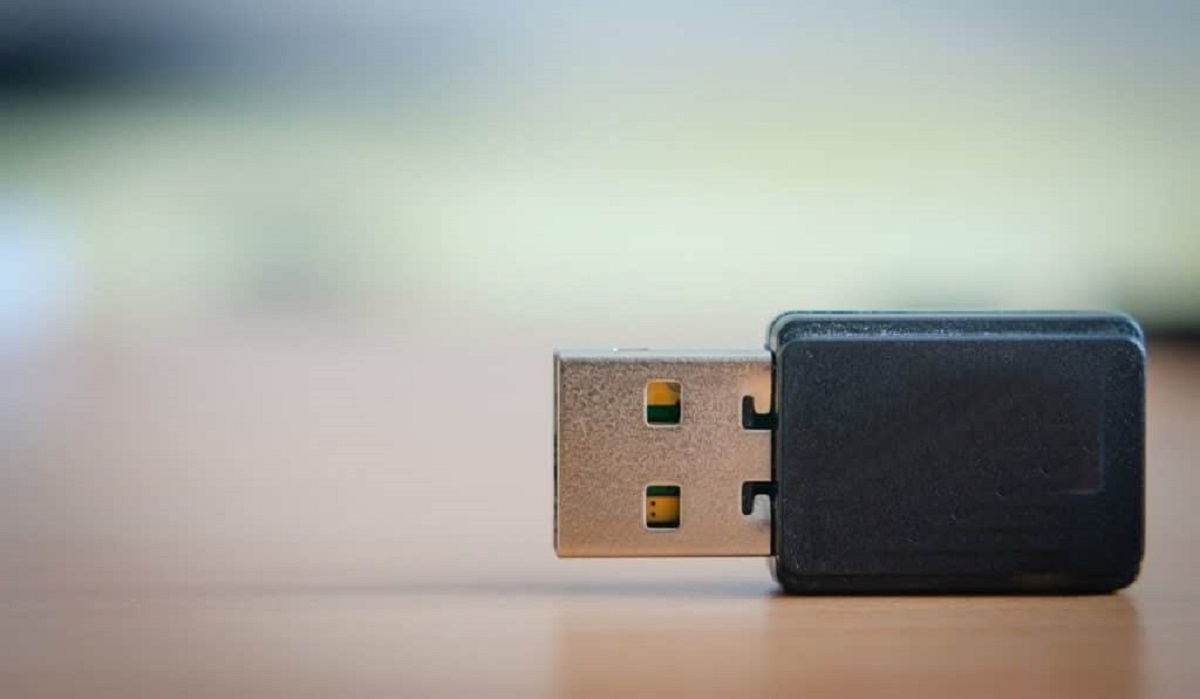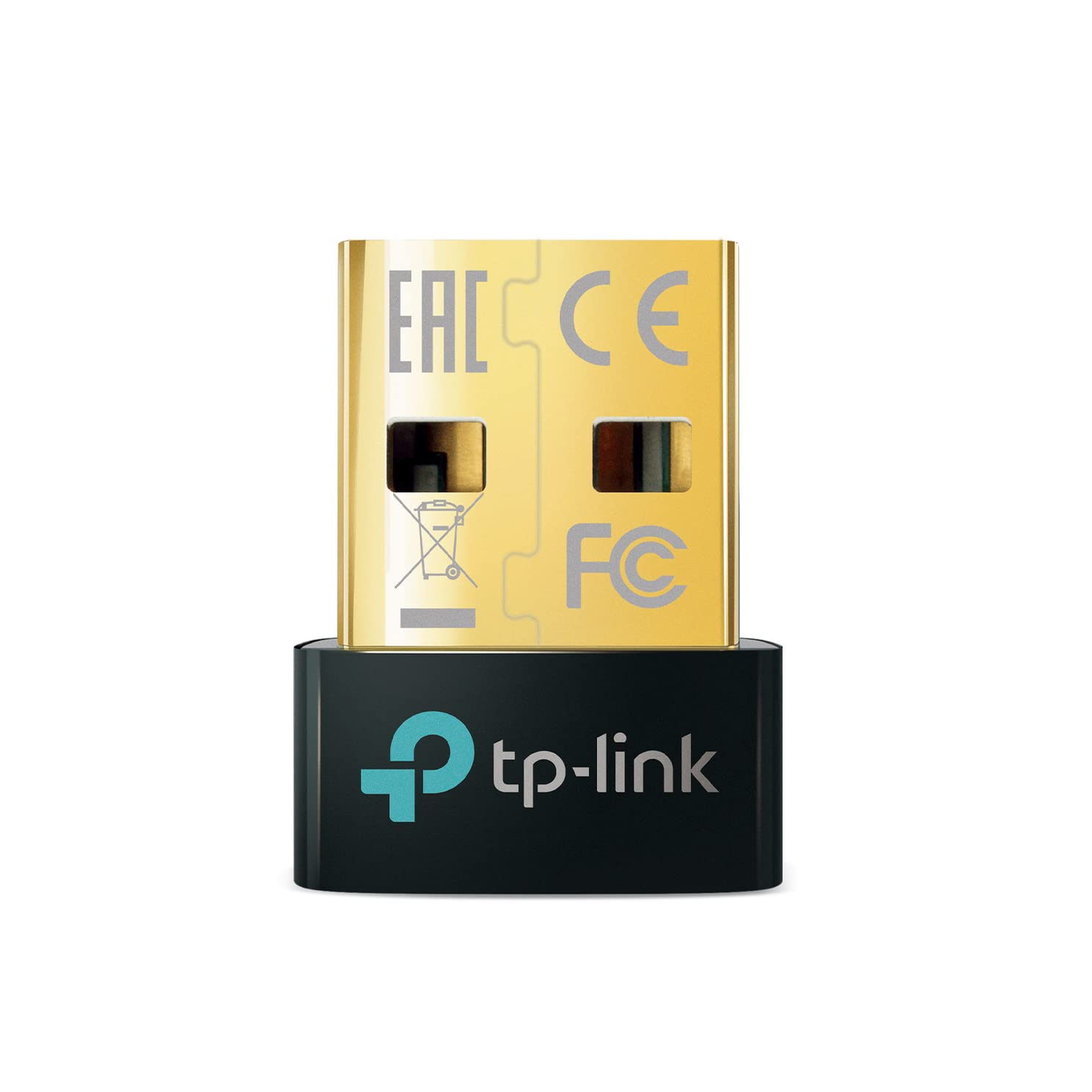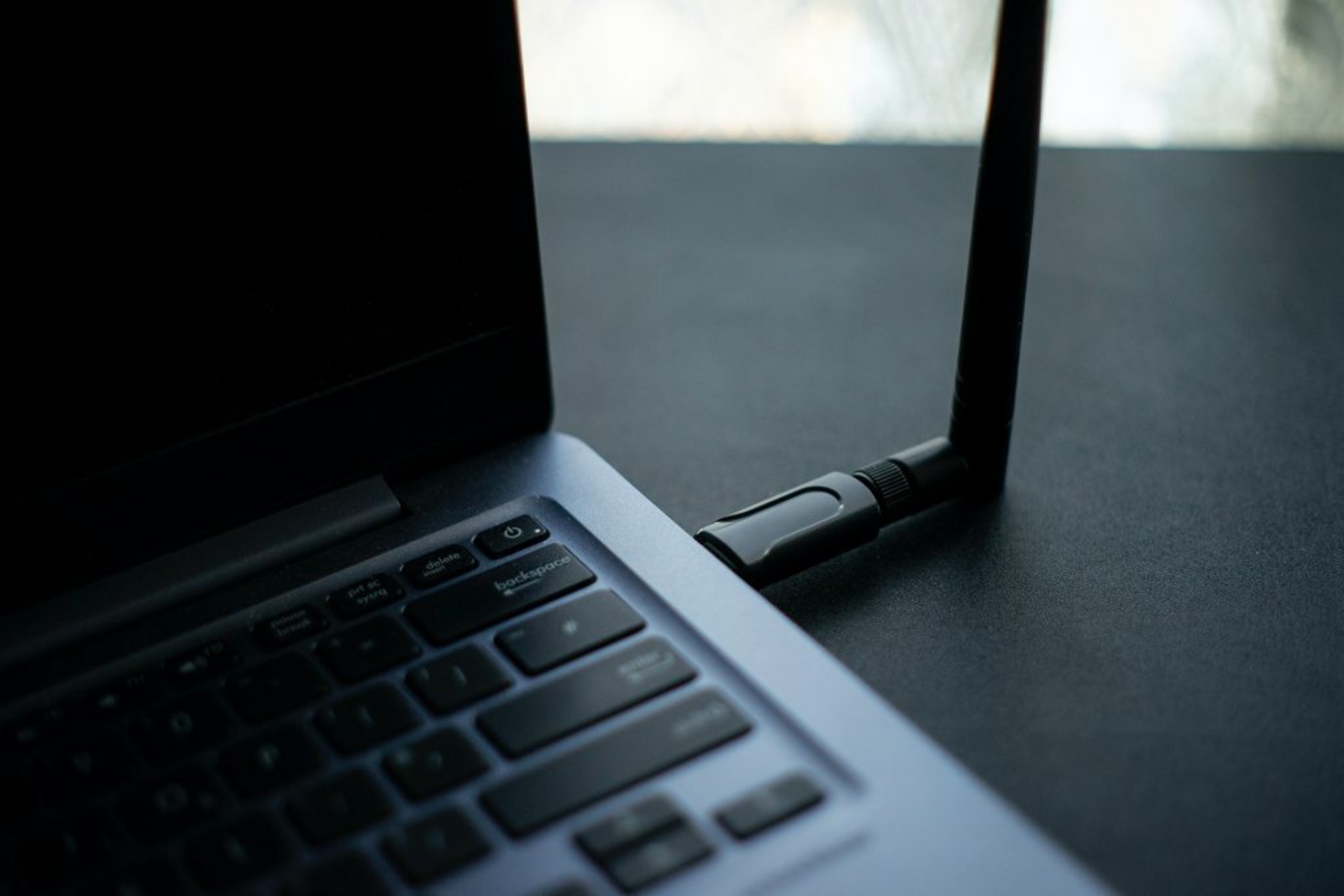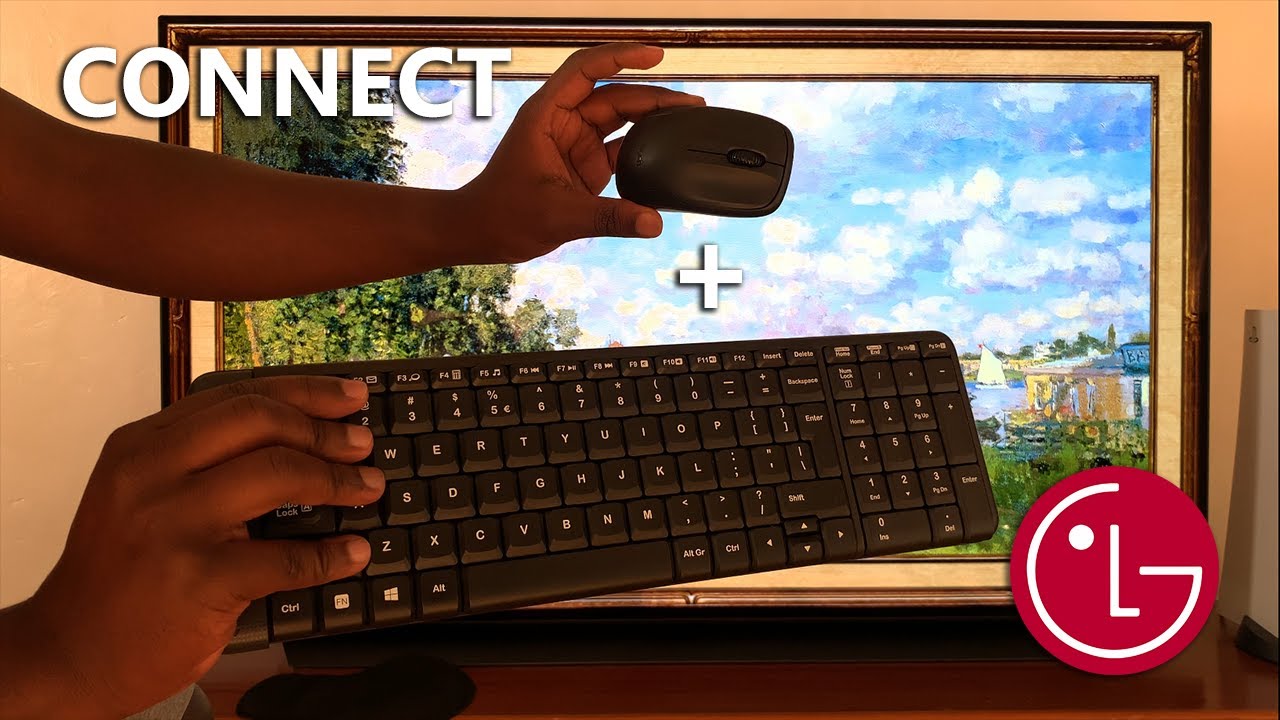Introduction
Welcome to the wonderful world of Bluetooth technology! In today’s interconnected world, wireless connectivity has become a necessity rather than a luxury. Whether it’s sharing files, connecting devices, or streaming music, Bluetooth plays a crucial role in enabling seamless communication between different devices.
At the heart of this wireless revolution lies the Bluetooth dongle, a small but powerful device that acts as an interface between your computer or device and Bluetooth-enabled devices. This unassuming little gadget has the ability to enhance the functionality of your devices by enabling wireless communication, allowing you to connect to a wide range of devices such as headphones, speakers, keyboards, and more.
In this article, we will explore in detail what a Bluetooth dongle is, how it works, the benefits of using one, the different types available, and how to use and troubleshoot common issues with a Bluetooth dongle.
So, whether you’re a tech enthusiast looking to expand your knowledge or someone who’s new to the world of Bluetooth, this article will serve as your guide to understanding and harnessing the power of Bluetooth dongles.
What Is a Bluetooth Dongle?
A Bluetooth dongle, also known as a Bluetooth adapter, is a small device that enables wireless communication between your computer or device and Bluetooth-enabled devices. It is a plug-and-play device that provides Bluetooth connectivity to devices that do not have built-in Bluetooth capabilities.
Essentially, a Bluetooth dongle acts as a bridge between your computer and other Bluetooth devices, allowing for seamless data transfer, audio streaming, and device pairing. It uses Bluetooth technology, a short-range wireless communication standard, to establish a secure connection between your device and a wide range of compatible devices.
Bluetooth dongles come in various forms, but the most common type is a USB dongle that plugs into the USB port of your computer or device. This versatile device can also be found in other form factors, such as Bluetooth cards for laptops or built-in modules in some devices.
Once connected, the Bluetooth dongle allows you to wirelessly connect to a variety of devices, including headphones, speakers, smartphones, tablets, keyboards, mice, game controllers, and more. This eliminates the need for cumbersome cables and simplifies the process of connecting and using multiple devices simultaneously.
It’s worth noting that not all devices come with built-in Bluetooth capabilities. Older computers, desktop PCs, and devices without Bluetooth functionality can greatly benefit from the addition of a Bluetooth dongle. By simply plugging in the dongle, you can instantly upgrade your device and enjoy the convenience and flexibility of wireless connectivity.
Now that we have a basic understanding of what a Bluetooth dongle is, let’s delve deeper into how it works and the benefits it provides.
How Does a Bluetooth Dongle Work?
A Bluetooth dongle works by utilizing Bluetooth technology to establish wireless communication between your computer or device and other Bluetooth-enabled devices. It consists of a small electronic circuit that enables your device to send and receive Bluetooth signals.
When you connect the Bluetooth dongle to your computer or device, it is recognized as a Bluetooth device by the operating system. The dongle interacts with the Bluetooth software and drivers installed on your device, allowing it to communicate with other Bluetooth devices in the vicinity.
One of the key components of a Bluetooth dongle is the radio transceiver. This transceiver is responsible for transmitting and receiving Bluetooth signals, ensuring seamless communication between your device and other Bluetooth devices. The dongle operates in the 2.4 GHz frequency range and uses a technique called frequency hopping spread spectrum to minimize interference and maintain a stable connection.
When you want to connect your device to a Bluetooth-enabled device, such as a pair of headphones, the Bluetooth dongle initiates a process called pairing. During the pairing process, the dongle and the desired device exchange encrypted information to establish a secure connection. This process ensures that only authorized devices can connect to your computer or device.
Once the devices are paired, the Bluetooth dongle enables data transfer and audio streaming between your computer or device and the connected device. You can send and receive files, stream music, make and receive calls, and control other Bluetooth-enabled devices directly from your computer or device.
In addition to facilitating device connections, some Bluetooth dongles also support advanced Bluetooth features, such as enhanced data rate (EDR) for faster data transfer, low energy (LE) for power-efficient communication with compatible devices, and dual-mode functionality for compatibility with both classic Bluetooth and Bluetooth Low Energy devices.
Overall, the Bluetooth dongle offers a convenient and efficient way to connect, communicate, and control a wide variety of devices using Bluetooth technology. Its compact design and plug-and-play functionality make it a versatile accessory for enhancing the capabilities of your computer or device.
Benefits of Using a Bluetooth Dongle
Using a Bluetooth dongle comes with a plethora of benefits, making it a valuable addition to your computer or device. Let’s take a closer look at the advantages of using a Bluetooth dongle:
1. Wireless Convenience: One of the primary benefits of a Bluetooth dongle is the ability to connect wirelessly. You can say goodbye to tangled cables and enjoy the freedom of wireless connectivity. Whether you’re streaming music, transferring files, or connecting peripheral devices, the absence of cables provides a clutter-free and hassle-free experience.
2. Device Compatibility: A Bluetooth dongle allows you to connect your computer or device to a wide range of Bluetooth-enabled devices. This means that you can easily pair and use headphones, speakers, keyboards, mice, game controllers, and numerous other devices that support Bluetooth connectivity. With a Bluetooth dongle, you can expand the functionality of your device and enhance your overall user experience.
3. Ease of Use: Bluetooth dongles are designed to be user-friendly and convenient. Most dongles offer plug-and-play functionality, which means you can simply connect the dongle to your device and start using it immediately without the need for complex configurations or installations. This makes it accessible to users of all technical levels.
4. Versatility: Bluetooth dongles are available in various form factors and sizes, making them versatile and adaptable to different devices. Whether you have a desktop computer, laptop, or even a device like a Raspberry Pi, there is likely a Bluetooth dongle that can connect and improve its capabilities. Additionally, some dongles offer compatibility with different versions of Bluetooth, allowing you to connect to both older and newer devices.
5. Increased Mobility: The wireless nature of Bluetooth connectivity provides increased mobility. With a Bluetooth dongle, you can connect and control devices from a distance, allowing you to move around freely without the constraints of wired connections. Whether you’re listening to music or giving a presentation, the flexibility to operate your devices from a distance adds convenience and ease.
6. Cost-Effective Solution: If your computer or device does not have built-in Bluetooth capabilities, purchasing a Bluetooth dongle is a cost-effective solution compared to buying a new device with Bluetooth pre-installed. By investing in a dongle, you can upgrade your existing device and enjoy the benefits of Bluetooth connectivity without the need for a full device replacement.
These are just a few of the many benefits that come with using a Bluetooth dongle. Whether it’s the convenience of wireless connectivity, increased device compatibility, or the versatility it offers, a Bluetooth dongle is a valuable accessory that can greatly enhance your computing experience.
Different Types of Bluetooth Dongles
Bluetooth dongles come in different types and form factors, each catering to specific needs and devices. Let’s explore the various types of Bluetooth dongles available in the market:
1. USB Dongles: USB dongles are the most common and popular type of Bluetooth dongles. These compact devices plug directly into the USB port of your computer or device, allowing for easy and convenient connectivity. USB dongles are compatible with a wide range of devices and provide reliable Bluetooth connectivity.
2. Bluetooth Cards: Bluetooth cards are typically used for laptops and PCs. They are internal Bluetooth modules that can be inserted into an available slot on the motherboard. These cards offer a more permanent and integrated Bluetooth solution for your device, without the need for an external dongle.
3. Bluetooth Adapters: Bluetooth adapters are larger in size compared to USB dongles and provide additional features and connectivity options. They usually have multiple ports and connectors, allowing you to connect various devices simultaneously. Bluetooth adapters are commonly used in professional settings or when you need to connect multiple devices to your computer or device.
4. Nano Dongles: Nano dongles are ultra-small Bluetooth dongles that protrude minimally from the USB port once plugged in. These compact dongles are designed to be inconspicuous and provide a seamless Bluetooth experience without adding bulk or obstructing other USB ports on your device.
5. Dual-Mode Dongles: Dual-mode dongles, also known as Dual-Mode Bluetooth adapters, are capable of supporting both classic Bluetooth and Bluetooth Low Energy (BLE) devices. This flexibility allows you to connect a wide range of devices, from traditional peripherals to energy-efficient devices like fitness trackers and smartwatches.
6. Bluetooth 5.0 Dongles: Bluetooth 5.0 dongles offer the latest Bluetooth version and technology. With Bluetooth 5.0, you can experience faster data transfer speeds, longer range, and improved power efficiency. These dongles are ideal if you want to take advantage of the latest Bluetooth features and capabilities.
When choosing a Bluetooth dongle, it’s essential to consider the compatibility with your device and the specific features you require. Whether you need a small and portable dongle for everyday use or a more advanced adapter for professional applications, there is a Bluetooth dongle available to meet your needs.
How to Use a Bluetooth Dongle
Using a Bluetooth dongle is relatively straightforward, and the process may vary slightly depending on the operating system you’re using. Here is a general guide on how to use a Bluetooth dongle:
Step 1: Plug in the Dongle: Start by plugging the Bluetooth dongle into an available USB port on your computer or device. Ensure that the dongle is securely inserted to establish a connection.
Step 2: Install Drivers (if required): Depending on the dongle and the operating system, drivers may need to be installed for proper functionality. In many cases, modern operating systems will automatically install the necessary drivers. However, if prompted to install drivers, follow the on-screen instructions or insert any accompanying driver software provided with the dongle.
Step 3: Enable Bluetooth: Once the dongle is connected and any required drivers are installed, you need to enable Bluetooth functionality on your computer or device. To do this, locate the Bluetooth settings in your device settings or system tray and toggle the switch to turn Bluetooth on. The exact location of the Bluetooth settings can vary depending on your operating system.
Step 4: Pairing Devices: With Bluetooth enabled, you can now pair your computer or device with other compatible Bluetooth devices. Put the peripheral device, such as a pair of headphones or speakers, into pairing mode as per the manufacturer’s instructions. Then, in your device’s Bluetooth settings, select the peripheral device from the list of available devices and initiate the pairing process. Follow any on-screen prompts to complete the pairing process.
Step 5: Test the Connection: Once the devices are successfully paired, you can test the connection by playing audio, transferring files, or performing any other desired action between your computer or device and the connected Bluetooth device. Ensure that both devices are within the recommended Bluetooth range for the best connection quality.
Step 6: Adjust Settings (if needed): Depending on your preferences, you may want to adjust the settings related to the Bluetooth dongle. This could include options such as managing paired devices, setting the default audio output, or modifying any specific settings provided by the Bluetooth dongle’s software.
It’s important to note that the process of using a Bluetooth dongle may differ slightly depending on the operating system and specific device. Consult the user manual or online resources for your particular dongle or operating system for any additional instructions or troubleshooting information.
Using a Bluetooth dongle opens up a whole new world of possibilities, allowing you to connect and enjoy the benefits of wireless communication with a variety of Bluetooth devices. Whether you’re connecting headphones for immersive audio or transferring files to a smartphone, a Bluetooth dongle offers convenience and flexibility in your everyday workflow.
Compatibility of Bluetooth Dongles
When it comes to using a Bluetooth dongle, compatibility is an essential factor to consider. Not all Bluetooth dongles are compatible with every computer, device, or operating system. Here are some key considerations for ensuring compatibility:
1. Operating System Compatibility: Bluetooth dongles typically come with driver software that allows them to work with specific operating systems. Before purchasing a dongle, ensure that it is compatible with your operating system, whether it’s Windows, macOS, Linux, or others. Most modern operating systems have built-in support for Bluetooth, but older or specialized systems may require additional software or drivers.
2. Bluetooth Version: Bluetooth dongles support different versions of the Bluetooth standard, such as Bluetooth 4.0, 4.2, 5.0, etc. It’s important to check the Bluetooth version of the dongle and ensure that it aligns with the version supported by your devices. Backward compatibility is usually a feature of newer Bluetooth versions, so a 5.0 dongle should work with devices that support older versions as well.
3. Device Compatibility: Verify that the Bluetooth dongle is compatible with the specific devices you want to connect to. This includes checking for compatibility with peripherals like headphones, speakers, keyboards, mice, and other devices you intend to use with your computer or device. Most dongles have wide compatibility, but it’s always best to double-check the specifications before purchasing.
4. Bluetooth Profiles: Bluetooth devices use specific profiles to communicate with each other. These profiles define the capabilities and functions supported by the device. Make sure that the Bluetooth dongle supports the required Bluetooth profiles for the devices you want to connect. Common profiles include the Hands-Free Profile (HFP) for phone calls, Advanced Audio Distribution Profile (A2DP) for stereo audio streaming, and Human Interface Device Profile (HID) for keyboards and mice.
5. Range and Interference: Bluetooth dongles typically have a limited range, usually around 33 feet (10 meters). Keep in mind that physical obstructions, such as walls and furniture, may affect the range and signal strength. Additionally, factors like wireless interference from other devices operating in the 2.4GHz frequency range can impact the performance and range of the Bluetooth connection.
6. Security Features: Bluetooth devices utilize security measures to protect against unauthorized access. Ensure that the Bluetooth dongle offers encryption protocols and features like secure pairing to ensure the security of your connections and data.
It’s always a good practice to research and read user reviews before purchasing a Bluetooth dongle to ensure compatibility with your specific requirements. Additionally, the manufacturer’s website or product documentation should provide detailed information about the dongle’s compatibility and system requirements.
By taking compatibility into consideration, you can ensure a seamless and hassle-free experience when using a Bluetooth dongle with your devices, extending their functionality and enabling wireless communication across a variety of compatible devices.
Troubleshooting Bluetooth Dongle Issues
While Bluetooth dongles provide convenient wireless connectivity, there may be instances where you encounter issues or face challenges during the setup or usage. Here are some common troubleshooting steps to help resolve Bluetooth dongle issues:
1. Restart and Reset: Begin by restarting your computer or device and unplugging the Bluetooth dongle. After a few moments, plug it back in and check if the issue is resolved. If not, you can try performing a reset on the dongle, typically by pressing a small reset button or using a pin to reset the device to its default settings.
2. Check Driver Updates: Ensure that you have the latest drivers installed for the Bluetooth dongle. Visit the manufacturer’s website and download any available driver updates for your specific dongle model and operating system. Outdated drivers can often cause connectivity issues, and updating them may resolve the problem.
3. Compatibility Check: Double-check the compatibility of the Bluetooth dongle with your device and operating system. Ensure that the dongle is compatible with the Bluetooth version and profiles supported by your devices. If the dongle is not compatible, it may not work properly or could cause connectivity issues.
4. Range and Obstructions: Check that the distance between the dongle and the connected devices is within the recommended Bluetooth range. Keep in mind that physical obstructions such as walls, furniture, or other electronic devices operating in the 2.4GHz frequency range can interfere with the Bluetooth signal. Try moving the dongle and the devices closer to each other, away from potential sources of interference.
5. Remove Interference: Ensure that there are no other wireless devices nearby that may cause interference with the Bluetooth signal. Devices like microwave ovens, cordless phones, and Wi-Fi routers can interfere with the Bluetooth connection. Temporarily disabling or moving these devices away from the dongle may help resolve connection issues.
6. Remove and Re-Pair Devices: If you are experiencing issues with a specific device connected to the dongle, try removing it from the list of paired devices and re-pairing it. This can help establish a fresh connection and resolve any inconsistencies or connection problems.
7. Update Firmware: Some Bluetooth dongles may have firmware that can be updated to address known issues or improve performance. Check the manufacturer’s website for any firmware updates available for your specific dongle model and follow the instructions to update the firmware if necessary.
8. Use Different USB Port: Trying a different USB port on your computer or device can help troubleshoot any issues related to the USB connection. Sometimes USB ports may experience power fluctuations or connectivity problems that can affect the performance of the Bluetooth dongle. Connect the dongle to another available USB port and check if the issue persists.
If you have exhausted these troubleshooting steps and are still experiencing persistent issues with the Bluetooth dongle, reaching out to the manufacturer’s support or consulting online forums and communities can provide further guidance and assistance in resolving the problem.
Remember that Bluetooth dongles can vary in terms of functionality, compatibility, and performance. Perform thorough research and read user reviews before purchasing a Bluetooth dongle to ensure that you select a reliable and well-supported device that aligns with your specific needs.
Conclusion
Bluetooth dongles have become indispensable for enhancing the wireless connectivity capabilities of computers and devices that lack built-in Bluetooth functionality. These small yet powerful devices allow users to enjoy the convenience and flexibility of wireless communication and connectivity with a wide range of Bluetooth-enabled devices.
In this article, we explored what a Bluetooth dongle is and how it works. We discussed its benefits, including wireless convenience, device compatibility, ease of use, versatility, increased mobility, and cost-effectiveness. We also covered the different types of Bluetooth dongles available, such as USB dongles, Bluetooth cards, adapters, nano dongles, dual-mode dongles, and Bluetooth 5.0 dongles.
We discussed the importance of compatibility when choosing a Bluetooth dongle, considering factors like operating system compatibility, Bluetooth version support, device compatibility, Bluetooth profiles, range, interference, and security features.
Additionally, we provided a guide on how to use a Bluetooth dongle, covering steps like plugging in the dongle, installing drivers, enabling Bluetooth, pairing devices, testing the connection, and adjusting settings. We also touched upon common troubleshooting steps for resolving Bluetooth dongle issues.
By understanding how Bluetooth dongles work, their benefits, compatibility considerations, and troubleshooting methods, users can confidently incorporate these devices into their setup and enjoy the seamless wireless connectivity they provide.
Remember to research and choose a Bluetooth dongle that suits your specific needs and ensures compatibility with your devices and operating system. With the right Bluetooth dongle, you can unlock a world of possibilities and enhance your computing experience by seamlessly connecting and interacting with a multitude of Bluetooth-enabled devices.







